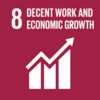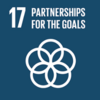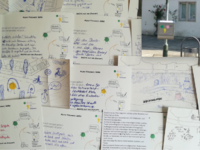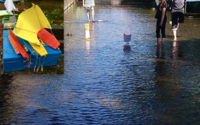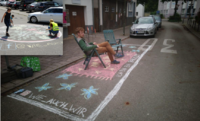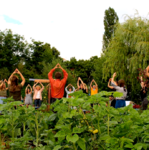Diedrich Sandbox: Difference between revisions
No edit summary |
|||
| (38 intermediate revisions by the same user not shown) | |||
| Line 1: | Line 1: | ||
== | == The Nürtingen Living Lab == | ||
<gallery caption=" " widths="300px" heights="200px" perrow="3"> | |||
File:LL_Nurtingen_Intro1.png | |||
File:LL_Nurtingen_Intro2.png | |||
File:LL_Nurtingen_Intro3.png | |||
</gallery> | |||
'''The Challenge''' | |||
The neighbourhoods are facing the following issues: lack of self-governance and local organisation, lack of local facilities, meeting places and multifunctional open spaces, lack of integration opportunities for people with different backgrounds, degradation of the build environment. | |||
'''Our Lab''' | |||
The LED2LEAP Living Lab in Nürtingen is part of the university’s outreach activities in the field of social innovation and education for sustainable development. Our focus is on sustainable neighbourhood development. The activities are closely linked to existing community-building projects at the neighbourhood level, steered by the town hall’s social department. In the summer of 2020, our activities focused on the neighbourhood of Klein-Tischardt, which is a very centrally located quarter with a diverse population and much unused open space potential. Engagement methods were very difficult to implement because of the pandemic, but the students involved came up with creative interventions which were well received by the residents. The activity is currently being followed up within the framework of a master thesis project analysing the neighbourhood's potential for self-governance and community management. Currently, we are transferring the concept to another neighbourhood, Braike, which the university campus building is part of. | |||
* | '''Our Partners''' | ||
*[https://www.bund-nuertingen.de/fileadmin/nuertingen/Solarstadt_2046/Bunte_Beete/Handzettel_BunteBeete.pdf Bunte Beete], an edible landscapes initiative in Nürtingen. | |||
*[https://hoelderlin-lab.de The Hoelderlin Project], a permanent partnership between the university and the municipality, which acts as an open platform for community change. | |||
*[https://www.nuertingen.de/de/nuertingen-fuer-alle/startseite Nürtingen] city hall. | |||
== Who is Involved? == | |||
As the lab is "living", the involvement is changing depending on the time and topic of our engagement with the community. However, the relationship between the city and the university is what initiates this process and in that way, university staff & students, as well as, city administrators are constantly involved. | |||
In addition to the above mentioned actors, in the Klein-Tischardt neighborhood lab, community volunteers, local businesses & property owners, engaged residents and local chapters of larger international movements, played a significant role in moving the lab activities forward and sustaining them. | |||
* | Throughout the Living Lab project the following groups have been involved: | ||
*Staff, students (Bachelors & Masters degree programs) at HfWU Nürtingen - Geislingen University | |||
*Community chapters of international movements - [https://fff.nuertingen.org Fridays for Future], [https://criticalmass.in/nurtingen Critical Mass] | |||
*Engaged local residents | |||
*Institutional representatives, such as those representing the elderly care facility | |||
*City administrators, through the local integration office | |||
*Local businesses | |||
*Volunteers | |||
*Schools | |||
*Local religious institutions | |||
== Main Theme of the Living Lab == | |||
Although the lab is focused on impacting communities through the organization and design of their space, there are a number of themes that naturally overlap with this. The lab is based on a partnership between the municipality and university, and intends to use this as a hub for linking new partnerships between local actors. These initial partnerships are the foundation for building resilient, healthy and sustainable communities. | |||
The spatial planning and design efforts that come from the lab are the result of using those partnerships to bring citizens into the researching of their community, analysis of the results, and carrying that understanding forward into a community vision with achievable goals and measurable results. | |||
The long term impact of citizen driven spatial planning & design can address climate change in these communities, improve the quality of life in their neighborhoods and set the conditions for responsible economic growth. | |||
<gallery caption=" " widths="100px" heights="100px" perrow="5"> | |||
File:UN_SD_8.png | |||
File:UN_SD_11.png | |||
File:UN_SD_13.png | |||
File:UN_SD_15.png | |||
File:UN_SD_17.png | |||
</gallery> | |||
== Methods == | |||
As part of the official projects steered by the city administration, who already have a trusting relationship with many communities and stakeholders, was and is a great benefit to us. The initial community outreach was done by the city administration and we literally jumped on that process and benefitted from it. Based on this initial networking, we reached out further to people and stakeholders, depending on the activities. We try to speak with inclusive language, actively listen, take all citizens equally seriously and use creative methods for interesting the public in the ideas generated by the lab. | |||
As we have a number of goals within the scope of the project, and a very diverse community to engage, we are sure to utilize a number of different methods to work towards the aim of the Living Lab. Below, is a list of the types of interventions our students teams used in the 2020 Living Lab in the Klein-Tischardt neighborhood. | |||
<gallery caption=" " widths="200px" heights="150px" perrow="4"> | |||
File:LL_Nurtingen_Methods1.jpg|''Community Workshops on Urban Pollinators'' | |||
File:LL_Nurtingen_Methods2.jpg|''City Portraits Hung in Public Space'' | |||
File:LL_Nurtingen_Methods3.png|''Postcard - Public Design Challenge'' | |||
File:LL_Nurtingen_Methods4.jpg|''Pop Up Gallery for Planning & Design Feedback'' | |||
File:LL_Nurtingen_Methods5.png|''Mini Regatta Competition to Animate a Space'' | |||
File:LL_Nurtingen_Methods6.png|''Parklets and Chalk Art Interventions'' | |||
File:LL_Nurtingen_Methods7.jpeg|''Site Specific Public Surveys'' | |||
File:LL_Nurtingen_Methods8.png|''Urban Garden as Recreation Space'' | |||
</gallery> | |||
* | == Project Impacts == | ||
* Project Managers: We're learning a lot and gaining more confidence in the process, realizing that this is a long-term process and that we have to be patient. It's important to always keep on going. | |||
* Colleagues: Three colleagues worked more closely with me over the summer and everyone found the engagement with the community very enriching. | |||
* Students: They were really proud of themselves and created excellent output, but they missed face to face engagement with the community. They also experienced conflicting values and critical voices, which were also an important lessons to take away. | |||
* The Community: The community is still very diverse and fragmented and it's hard for them to get self-organised. We are working on it. | |||
== Project Location & Dissemination == | |||
{{#display_map: 48.6237,9.3365|zoom=12|height=400px | |||
|width=880px }} | |||
''Location of the Living Labs in Nürtingen include the Klein-Tischardt district in 2020, and the Braike district in 2021.'' | |||
* | * Social media sites - [https://www.facebook.com/Wie_auch_wir-110719823996552 facebook], [https://www.instagram.com/wie_auch_wir instagram] | ||
* We were given an empty shop to use for a temporary exhibition which is still going on, the shop is on a central square and has two large shop windows. The place was supposed to be demolished, but that plan is delayed, which is why our exhibition is still there. | |||
* Open air exhibition of living lab results on an open space in the neighbourhood from July 10-24, 2020 & posters advertising the exhibition | |||
* Digital presentation of results on July 9, 2020, with community participation | |||
* Press information in the local newspaper, university newsletter and annual report of the university | |||
* | |||
Latest revision as of 12:57, 31 March 2021
The Nürtingen Living Lab
The Challenge
The neighbourhoods are facing the following issues: lack of self-governance and local organisation, lack of local facilities, meeting places and multifunctional open spaces, lack of integration opportunities for people with different backgrounds, degradation of the build environment.
Our Lab
The LED2LEAP Living Lab in Nürtingen is part of the university’s outreach activities in the field of social innovation and education for sustainable development. Our focus is on sustainable neighbourhood development. The activities are closely linked to existing community-building projects at the neighbourhood level, steered by the town hall’s social department. In the summer of 2020, our activities focused on the neighbourhood of Klein-Tischardt, which is a very centrally located quarter with a diverse population and much unused open space potential. Engagement methods were very difficult to implement because of the pandemic, but the students involved came up with creative interventions which were well received by the residents. The activity is currently being followed up within the framework of a master thesis project analysing the neighbourhood's potential for self-governance and community management. Currently, we are transferring the concept to another neighbourhood, Braike, which the university campus building is part of.
Our Partners
- Bunte Beete, an edible landscapes initiative in Nürtingen.
- The Hoelderlin Project, a permanent partnership between the university and the municipality, which acts as an open platform for community change.
- Nürtingen city hall.
Who is Involved?
As the lab is "living", the involvement is changing depending on the time and topic of our engagement with the community. However, the relationship between the city and the university is what initiates this process and in that way, university staff & students, as well as, city administrators are constantly involved.
In addition to the above mentioned actors, in the Klein-Tischardt neighborhood lab, community volunteers, local businesses & property owners, engaged residents and local chapters of larger international movements, played a significant role in moving the lab activities forward and sustaining them.
Throughout the Living Lab project the following groups have been involved:
- Staff, students (Bachelors & Masters degree programs) at HfWU Nürtingen - Geislingen University
- Community chapters of international movements - Fridays for Future, Critical Mass
- Engaged local residents
- Institutional representatives, such as those representing the elderly care facility
- City administrators, through the local integration office
- Local businesses
- Volunteers
- Schools
- Local religious institutions
Main Theme of the Living Lab
Although the lab is focused on impacting communities through the organization and design of their space, there are a number of themes that naturally overlap with this. The lab is based on a partnership between the municipality and university, and intends to use this as a hub for linking new partnerships between local actors. These initial partnerships are the foundation for building resilient, healthy and sustainable communities.
The spatial planning and design efforts that come from the lab are the result of using those partnerships to bring citizens into the researching of their community, analysis of the results, and carrying that understanding forward into a community vision with achievable goals and measurable results.
The long term impact of citizen driven spatial planning & design can address climate change in these communities, improve the quality of life in their neighborhoods and set the conditions for responsible economic growth.
Methods
As part of the official projects steered by the city administration, who already have a trusting relationship with many communities and stakeholders, was and is a great benefit to us. The initial community outreach was done by the city administration and we literally jumped on that process and benefitted from it. Based on this initial networking, we reached out further to people and stakeholders, depending on the activities. We try to speak with inclusive language, actively listen, take all citizens equally seriously and use creative methods for interesting the public in the ideas generated by the lab.
As we have a number of goals within the scope of the project, and a very diverse community to engage, we are sure to utilize a number of different methods to work towards the aim of the Living Lab. Below, is a list of the types of interventions our students teams used in the 2020 Living Lab in the Klein-Tischardt neighborhood.
Project Impacts
- Project Managers: We're learning a lot and gaining more confidence in the process, realizing that this is a long-term process and that we have to be patient. It's important to always keep on going.
- Colleagues: Three colleagues worked more closely with me over the summer and everyone found the engagement with the community very enriching.
- Students: They were really proud of themselves and created excellent output, but they missed face to face engagement with the community. They also experienced conflicting values and critical voices, which were also an important lessons to take away.
- The Community: The community is still very diverse and fragmented and it's hard for them to get self-organised. We are working on it.
Project Location & Dissemination
Location of the Living Labs in Nürtingen include the Klein-Tischardt district in 2020, and the Braike district in 2021.
- Social media sites - facebook, instagram
- We were given an empty shop to use for a temporary exhibition which is still going on, the shop is on a central square and has two large shop windows. The place was supposed to be demolished, but that plan is delayed, which is why our exhibition is still there.
- Open air exhibition of living lab results on an open space in the neighbourhood from July 10-24, 2020 & posters advertising the exhibition
- Digital presentation of results on July 9, 2020, with community participation
- Press information in the local newspaper, university newsletter and annual report of the university



